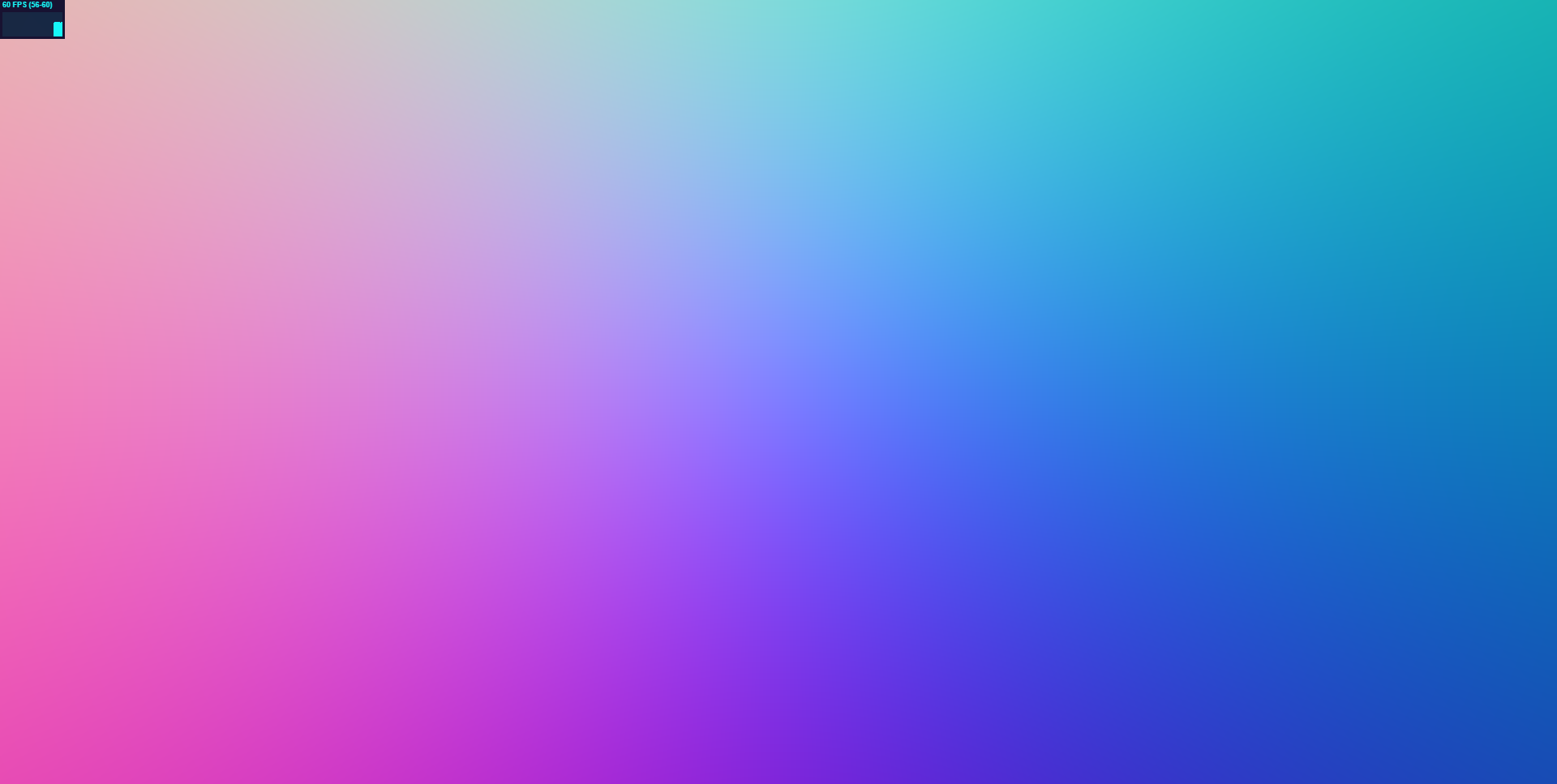- Gain experience with signed distance functions
- Experiment with animation curves
Please feel free to use this code as a base (https://www.shadertoy.com/view/fsdXzM)
The code we have provided for this assignment features the following:
- A square that spans the range [-1, 1] in X and Y that is rendered with a shader that does not apply a projection matrix to it, thus rendering it as the entirety of your screen
- TypeScript code just like the code in homework 1 to set up a WebGL framework
- Code that passes certain camera attributes (listed in the next section), the screen dimensions, and a time counter to the shader program.
- (10 points) Modify the provided
flat-frag.glslto cast rays from a virtual camera. We have set up uniform variables in your shader that take in the eye position, reference point position, and up vector of theCamerain the provided TypeScript code, along with a uniform that stores the screen width and height. Using these uniform variables, and only these uniform variables, you must write a function that uses the NDC coordinates of the current fragment (i.e. its fs_Pos value) and projects a ray from that pixel. Refer to the slides on ray casting from CIS 560 for reference on how to cast a ray without an explicit view-projection matrix. You'll have to compute your camera's Right vector based on the provided Up vector, Eye point, and Ref point. You can test your ray casting function by converting your ray directions to colors using the formulacolor = 0.5 * (dir + vec3(1.0, 1.0, 1.0)). If your screen looks like the following image, your rays are being cast correctly:
- (70 points) Create a scene using raymarched signed distance functions.
The subject of your scene should be based on some reference image, such as a
shot from a movie or a piece of artwork. Your scene should incorporate the
following elements:
- The SDF combination operation Smooth Blend.
- Basic Lambertian reflection using a hard-coded light source and SDF surface normals.
- Animation of at least one element of the scene, with at least two Toolbox Functions used to control the animation(s).
- Hard-edged shadows cast by shapes in the scene onto one another using a shadow-feeler ray.
For the next assignment you will build upon this scene with procedural textures and more advanced lighting and reflection models, so don't worry if your scene looks a bit drab given the requirements listed above.
- (10 points) Following the specifications listed
here,
create your own README.md, renaming this file to INSTRUCTIONS.md. Don't worry
about discussing runtime optimization for this project. Make sure your
README contains the following information:
- Your name and PennKey
- Citation of any external resources you found helpful when implementing this assignment.
- A link to your live github.io demo (refer to the pinned Piazza post on how to make a live demo through github.io)
- An explanation of the techniques you used to model and animate your scene.
- IQ's Article on SDFs
- IQ's Article on Smooth Blending
- IQ's Article on Useful Functions
- Breakdown of Rendering an SDF Scene
Commit and push to Github, then submit a link to your commit on Canvas. Remember to make your own README!